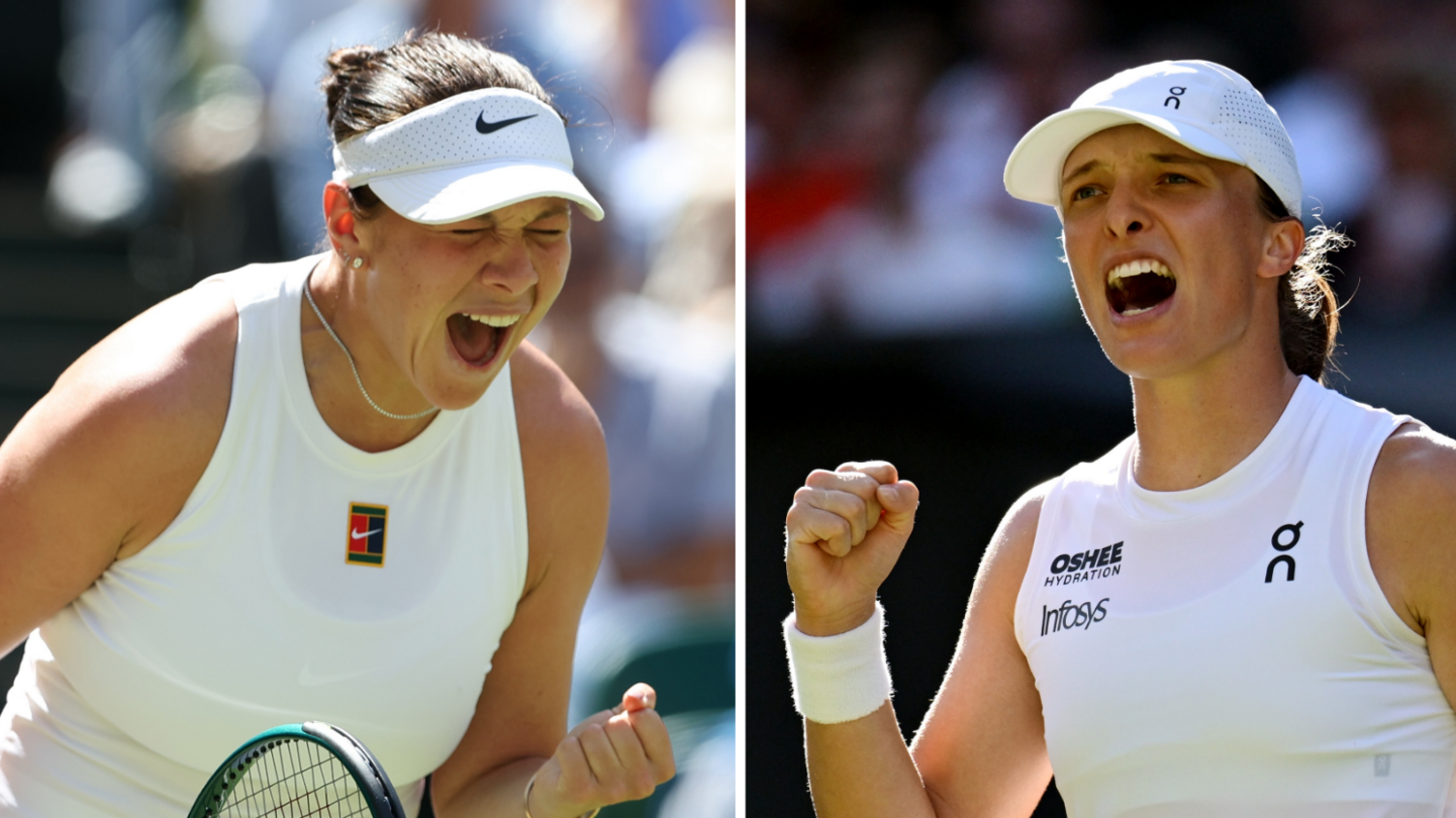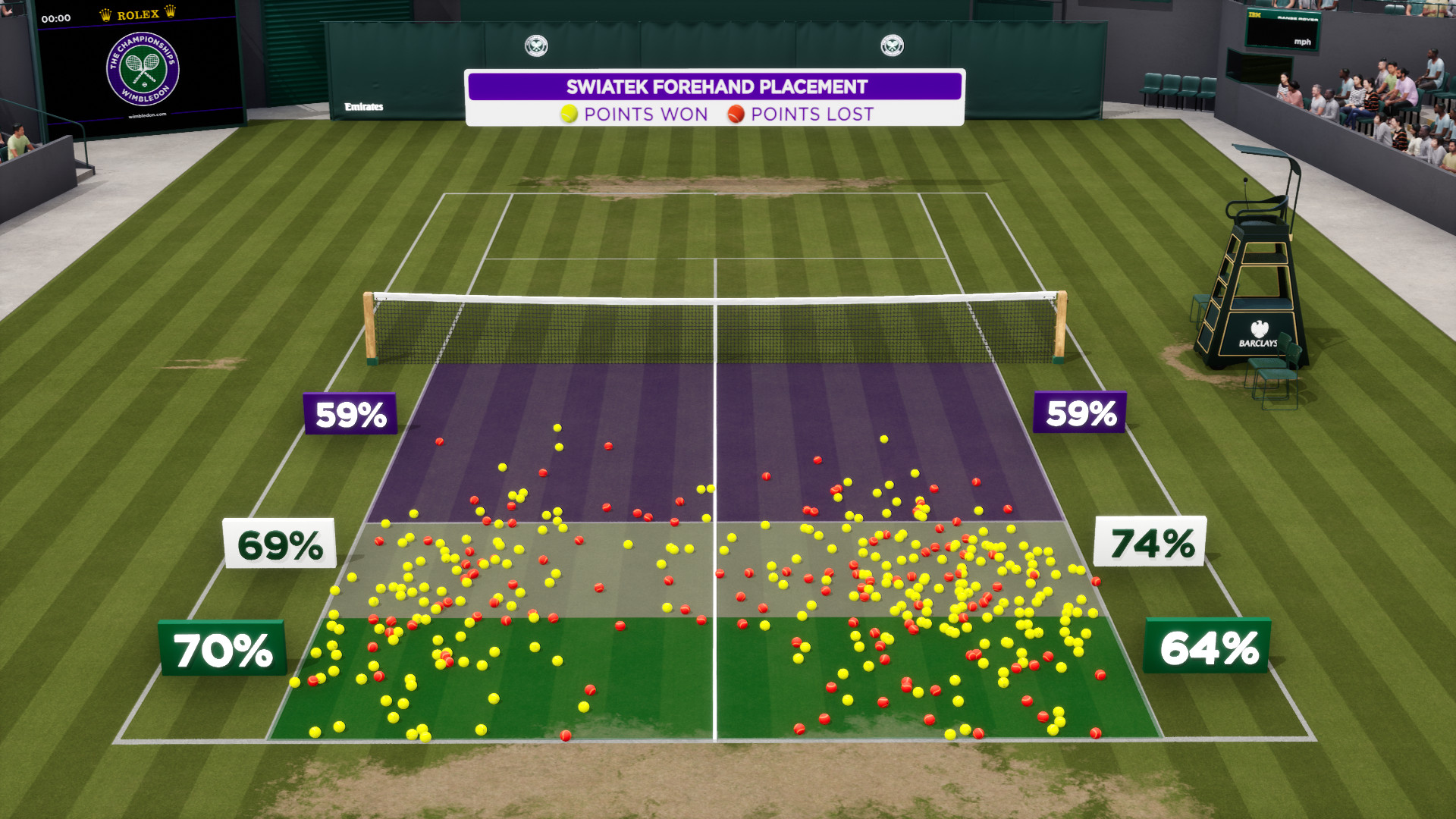
In her latest Wimbledon column, BBC Sport analyst Naomi Broady – a former top-60 player on the WTA Tour – analyses where Saturday’s women’s final between Iga Swiatek and Amanda Anisimova will be won and lost.
On one side, we have a five-time Grand Slam champion who has always had an uneasy relationship with the grass.
On the other is a former teenage prodigy who is fulfilling her potential after taking a significant break from the sport to protect her mental health.
Both Iga Swiatek and Amanda Anisimova have fascinating stories to tell as they each prepare for their first Wimbledon final.
This is how I think Saturday’s history-making match will be decided.
Both players are understandably going to be nervous coming into the match – it’s the Wimbledon final! The outcome will likely come down to who manages the occasion better.
Anisimova was pretty nervous in her quarter-final win against Anastasia Pavyluchenkova, to the point where she kept dropping to the floor on her haunches in the last couple of games – even when it wasn’t match point.
It was an illustration of the feeling of desperation the world number 13 was facing as she edged closer to victory.
We saw similar reactions a few times early on in the semi-final against Aryna Sabalenka too but she managed to settle more as the match went on.
Swiatek, having won majors and having been the world number one for such a long time, has the edge in terms of experience – that absolutely counts for a lot.
But Anisimova has nothing to lose. Of course she is desperate to win the Wimbledon final, but at the start of the fortnight she would never have thought she would actually be here in the championship match.
She can close her eyes in the final and have a swing – which fits best into what she does. This circumstances allows her to be more dangerous.
So she can go out there and play freely, whereas I think Swiatek might feel extra pressure.
Swiatek – now ranked fourth – has never won the singles title here, she’s the higher ranked and many people will expect her to lift the trophy.
I think being the underdog favours Anisimova and it fits in well with her aggressive game style.
Swiatek and Anisimova are only three months apart in age but they are yet to play each other at tour level.
They will still know each other very well, though. They played once in the juniors – back in 2016 – and they have of course seen each other play a ton, and probably hit together through the years too.
It won’t be the same as going out there and knowing absolutely nothing about their opponent.
When you’re in the same year group as someone, it’s kind of like you’re old school friends and you’ll have known them since you were young – especially if you’re one of the top juniors in your country, which Swiatek and Anisimova both were.
They won’t be scrapping for information before they walk out.
Not only they will be getting detailed analysis from their teams, they will already have a rough idea of what’s coming at them.
If you have never played someone before, you will mix up a few different shots up in the warm-up to gauge how your opponent feels – but I don’t think that will be the case for the final.
 Image source, Getty Images
Image source, Getty Images
Image caption,
Both players warmed up for Wimbledon by reaching WTA Tour finals – Anisimova finishing runner-up at Queen’s, while Swiatek was runner-up in Bad Homburg
For the eighth time in eight years, there will be a first-time Wimbledon women’s champion.
Why does Wimbledon throw up so many different winners? I think mainly just because it’s such a short grass-court swing and a quick turnaround from the French Open on the clay.
Most players who go deep in the Slams don’t want to play in the week before a major but you don’t always have a choice in the run-up to Wimbledon.
A lot of players rock up to Wimbledon feeling quite unsettled, and those who have lost earlier at Roland Garros almost have a bit of an advantage.
If they are playing two or three tournaments coming into Wimbledon, they are feeling far more settled and have figured out the changes in bounces a little sooner.
When you first change surfaces, you are actively thinking about movement, court positions and taking the ball earlier.
When you’re playing well, you’re on autopilot and not actively thinking much at all.
So I think both Swiatek and Anisimova getting on the grass earlier this year has worked in their favour at Wimbledon.
This will be a battle between Anisimova’s big backhand and Swiatek’s big forehand – it’s going to be a real chess match.
Getting the first strike is key for Anisimova.
She is going to look to control the rally early on – and Swiatek doesn’t like to play reactive tennis.
Swiatek has often struggled against the bigger, flatter hitters – just look at Jelena Ostapenko’s win record over her.
Anisimova needs to be really brave. Even when she is feeling the nerves and just wants to find the court, that is what she has to do above anything else.
She is tall and can get over the ball and hit down on her strokes – that’s what Aryna Sabalenka struggled to counteract in their semi-final.
Anisimova’s backhand was especially dangerous.
Whenever they were in cross-court backhand exchanges, Sabalenka had to hit a lower risk shot to try to change direction down the line to get it out of Anisimova’s strike zone.
Against Swiatek, it is going to be about who is able to find the right ball first to change direction down the line and get the cross-court rally on the wing they prefer.
By her own lofty standards, Swiatek’s season has been below par up to now and there had been some uncertainty in her game.
But she has settled down in the grass court season – on her least favourite surface – and has been finding her form at Wimbledon.
We’ve seen the best of her over the past fortnight. She might struggle at the start of a match but when she finds her rhythm and gets into her stride, there is no stopping her.
I think she has moved a little further back behind the baseline, giving herself a fraction more time on the grass.
That has allowed Swiatek to wind up the top-spin forehand which is fundamental to her clay-court success, and get the ball out of the strike zone of her previous opponents.
Swiatek is looking more tactically mature and using the angles – hammering opponents with the forehand cross to leave the ad court (each player’s left-sided service court) wide open – to her benefit.
But it will be really interesting to see if that works as effectively against Anisimova’s backhand.

Image caption,
This Hawk-Eye analysis shows how Swiatek has used depth and angle with her forehand to win points
Naomi Broady was speaking to BBC Sport’s Jonathan Jurejko at Wimbledon.
